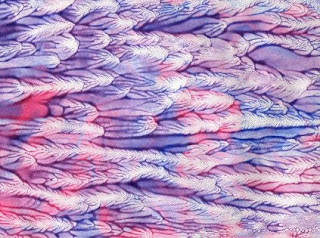Here are my notes from
Sanford Kwinter's Architectures of Time:
The Complex and the Singular
The problem is dealing with time as something real. The forms of time in historical developments such as accounting practices, universal mechanical laws, and techniques for governing populations are abstract. That they measure and mange time…but nature is wild.
According to traditional western theoretical models, precise measure seems possible only in space, not time. How can time as a “process of becoming-ever-different,” a producer of novelty, be subject to any sort of precise measure? How to reconcile the wild with the drive to deal with things that are knowable?
Change tends to be accepted as a first principle, or not at all. “All change is change over time; no novelty appears without becoming…” (p. 5)
Because the complexity of the world is beyond our capacity to grasp or measure, it is important to engage reality at the level of process.
Cultural production (architecture included) has not done a good job of dealing with complex processes of becoming, instead it tends to revert to “postmodern” or “critical” practices.
“Critique is always a critique (and therefore an elaboration) of what exists already.” (p. 6) In other words, it is re-presentational.
Morphogenesis is the emergence and evolution of form. A “morphogenetic model of the possible in relation to the real…” (p. 6) works with two controlling operators: resemblance and limitation. Resemblance, the real matches an image of the possible. Limitation, not every possibility can or does become real. This means that reality is only a picture of possibility and possibility is merely a storehouse of pre-formed images. “This static view of things has dominated nearly all aspects of Western culture from the time of the Eleatics…” (p. 7) See Bergson, “The Possible and the Real.”
On the other hand, it must be acknowledged that things are always eroding and being created, nothing “escapes the perpetual onslaught of differentiation according to which objects are continually becoming different from themselves, undergoing transformation.” (p. 8)
There is a need for a different way of thinking about morphogenesis that works according to a scheme that links the actual with the virtual. The virtual is fully real, a free-floating difference yet to be combined with other differences. The process of actualization is in itself a process of becoming, of differentiation, and thus the actual does not resemble the virtual. “The relation of the virtual to the actual is therefore not one of resemblance but rather of difference, innovation, or creation…” (p. 8)
Realization programmatically reproduces what was already there, actualization “invents through a continuous, positive, and dynamic process of transmission, differentiation, and evolution.” (p.9)
Actualization operates in time and creates novelty, realization annihilates time.
The philosophies of Nietzsche, Foucault, and Deleuze are all based on the principle of a “mobile ground of continuous production of the real as the basis of history and life…an irreducible living dynamism that drives existence from within.” (p. 11)
Four issues must be addressed relative to the problem of the new:
- redefine the traditional concept of the object
- reintroduce and radicalize the theory of time
- conceive of “movement” as a first principle
- embed all three of these in a theory of the “event”
Without forgetting that the complexity of the contemporary world necessitates a somewhat tactical process driven mode of engagement, there are two pathways for architecture to follow.
The first deals with a revision of the concept of the object where architecture is an operator in institutional and social systems.
The second deals with movement as a first principle. This points to complex, adaptive, dynamic systems in science…”patterns that are not static but appear only over-time…” , the need to consider context, and the concept of singularities (moments in systems when qualities, not just quantities undergo fundamental change) (p. 13)
In the reconsideration of the object, where does architecture belong, how is its role defined? Not as it is defined by appearance, but by performance, its capacities to do work and create change.
Foucault’s Discipline and Punish details “architecture’s” function as a hinge between the material realm and formations of power. Management or logistics may be the only “real” modern architectural object. (p. 18)
In Foucault’s analysis of the Panopticon, the building itself is less important than the discussion of a set of relations that get enfolded in a social structure. It represents a technique rather than a building. “It is one of the central tasks of Foucault’s study to develop – to flesh out, as it were – the new microphysical continuum where architectural and human multiplicities mingle as if two modes of a single substance.” (p. 19)
Moving away from the design of aesthetic objects and toward dynamic field of interaction opens new fields for architects and designers. Analysis of the object vs. the complex.
Paradoxically, the clock annihilated time by reducing it to a thin, institutionalized, generalization.
“From the moment a system is understood as evolving over time, what becomes important are the transformations it undergoes, and all the transformations in a system are the result of energy – or information – moving through it.” (p.23)
Three general types of transformation:
- importing information from outside the system
- exporting information to the milieu in which the system resides
- transporting information from heterogeneous one level to another within the system
‘Random’ differences vs. ‘singular’ differences: random differences “emerge and pass without leaving a trace.” (p. 24) Singular differences (like the steam engine) affect change by combining with other differences to “induce difference at another scale or level in the manifold.” (p. 26)
























